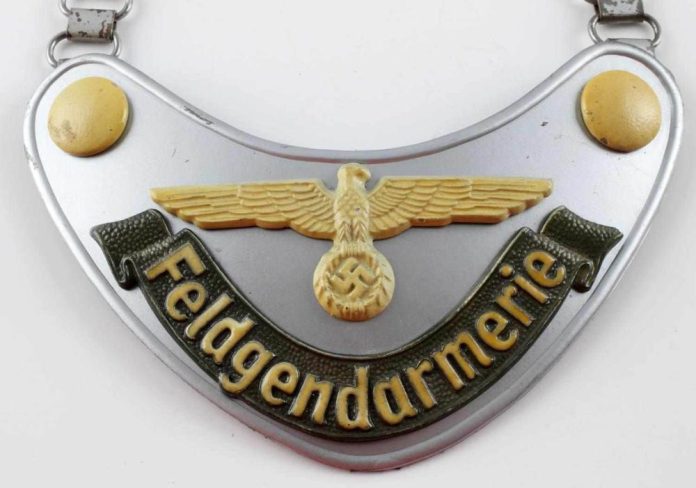Introduction
The WWII German gorget, an iconic piece of military insignia, carries a history steeped in tradition, functionality, and meticulous craftsmanship. Worn as a sign of rank and affiliation, the gorget played a significant role in the uniformity and identity of the German forces. This article delves into the fascinating manufacturing details of this emblematic piece, highlighting the materials used, production processes, distinctive features, and variations throughout the war.
Materials Used in Production
The manufacture of the WWII German gorget involved the use of robust and resilient materials to ensure durability and longevity. Primarily, these pieces were crafted from metals such as brass, aluminum, and sometimes steel. These metals were chosen for their resilience and ability to withstand varied weather conditions without significant wear or corrosion.
The gorget was often silver or gold-plated to reflect the status of the wearer. Silver-plated gorgets were generally associated with lower ranks, while gold-plated ones were worn by higher-ranking officials. This material choice not only influenced the gorget’s appearance but also its functionality and symbolic value.
Manufacturing Process
The manufacturing of the WWII German gorget was a meticulous process involving several steps. Firstly, the chosen metal was molded into the desired shape – a crescent or ‘gorget’ shape that sits comfortably on the chest. The metal was then carefully embossed or engraved with the appropriate insignia, typically a national emblem or specific unit symbol.
Next, the piece was plated with silver or gold, depending on the rank of the wearer. This plating process required the gorget to be dipped into a bath containing a solution of the desired plating metal. An electrical current was then passed through the bath, causing the metal ions to bond with the gorget, thereby creating a thin, durable layer of silver or gold.
Finally, the gorget was polished to a high shine, reflecting the pride and discipline of the German forces. The resulting piece was not just a rank insignia but a work of art demonstrating the skilled craftsmanship of the era.
Distinctive Features
The WWII German gorget is distinguished by several unique features. The most prominent of these is the detailed embossing or engraving on the surface. This often included the national emblem – a Reichsadler or ‘Imperial Eagle’ – flanked by specific unit or rank insignia. This intricate detailing showcased the finesse and precision involved in the manufacturing process.
Moreover, the crescent shape of the gorget, designed to sit snugly around the neck, is another distinctive feature. This design was not only functional but also carried historical significance, harking back to the gorgets used in medieval armor.
Variations Over the Course of WWII
As with many aspects of war, the manufacturing of the German gorget saw several changes throughout WWII. Early versions of the gorget were typically heavier, made from brass and featured more intricate detailing. As the war progressed and resources became scarcer, manufacturers had to adapt. Later versions of the gorget were often lighter, made from cheaper materials like aluminum, and featured simplified designs.
The design alterations also reflected changes in military aesthetics and the practical need for lighter, more durable insignia. Despite these variations, the essential form and symbolic significance of the gorget remained consistent throughout the war.
Conclusion
Understanding the manufacturing details of the WWII German gorget opens a fascinating window into the past. It reveals not just the skilled craftsmanship and meticulous attention to detail of the era, but also the practical adaptations necessitated by war. For collectors, historians, and military enthusiasts alike, appreciating these aspects enriches our understanding of this significant piece of history. From the materials used to the distinctive features and variations over time, each element of the WWII German gorget tells a story of tradition, innovation, and resilience.



